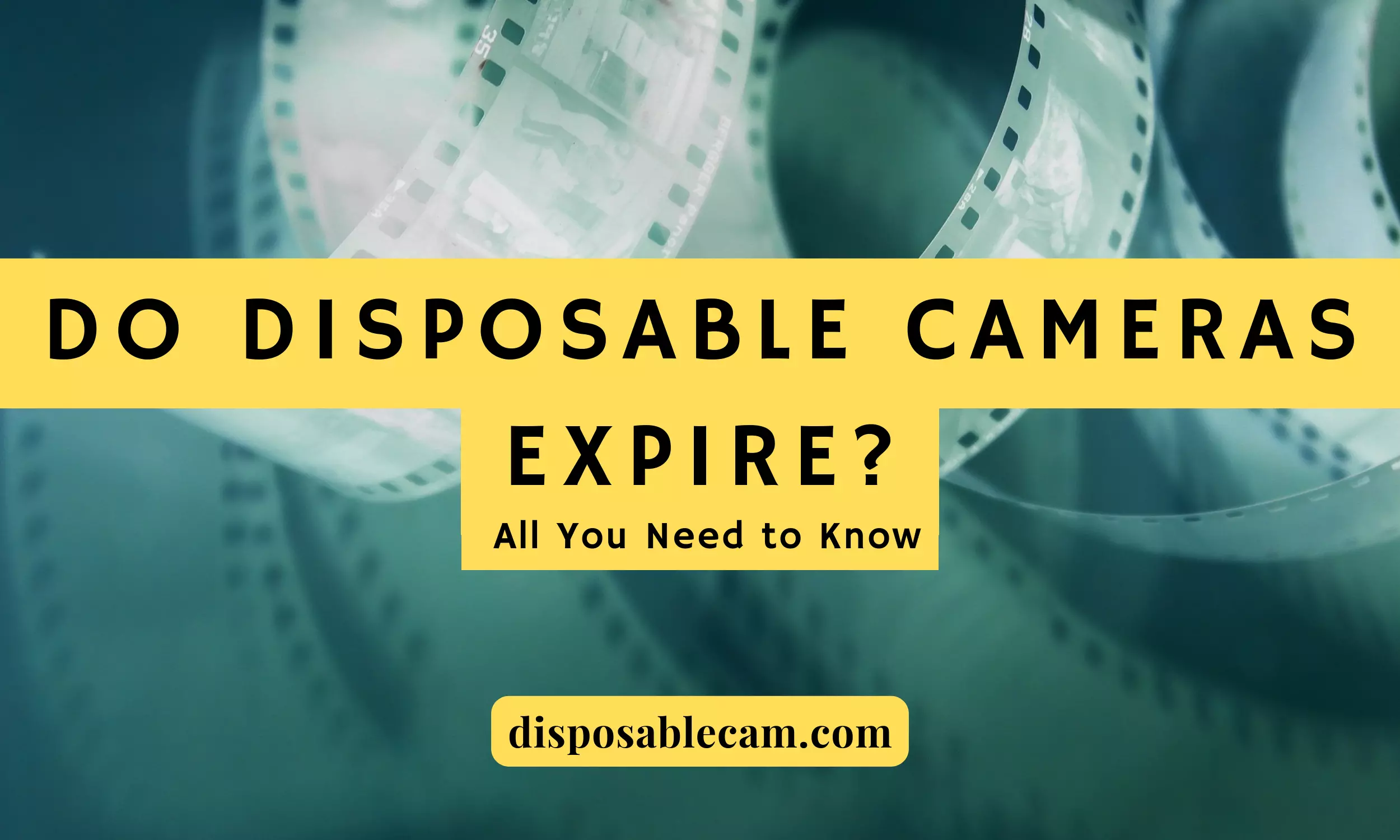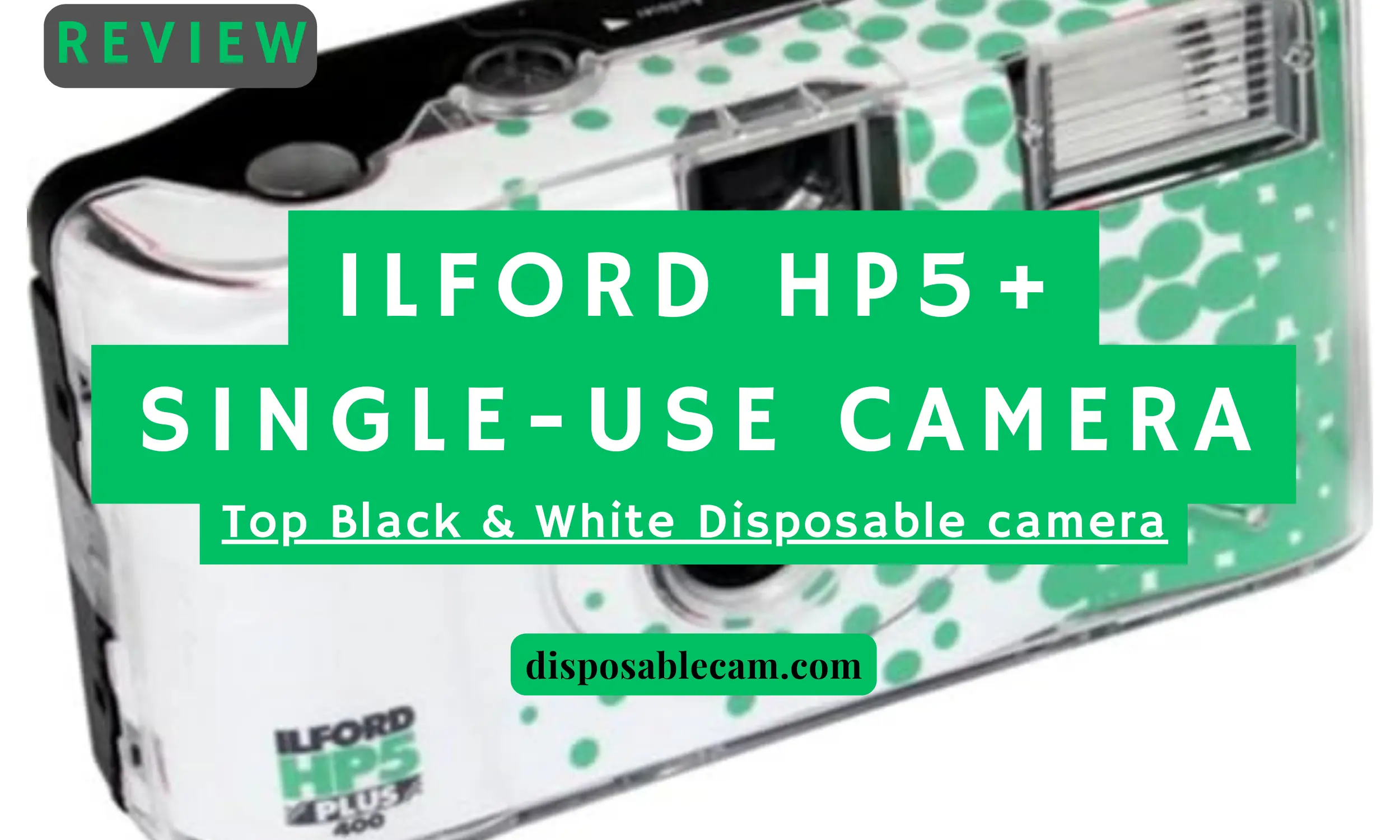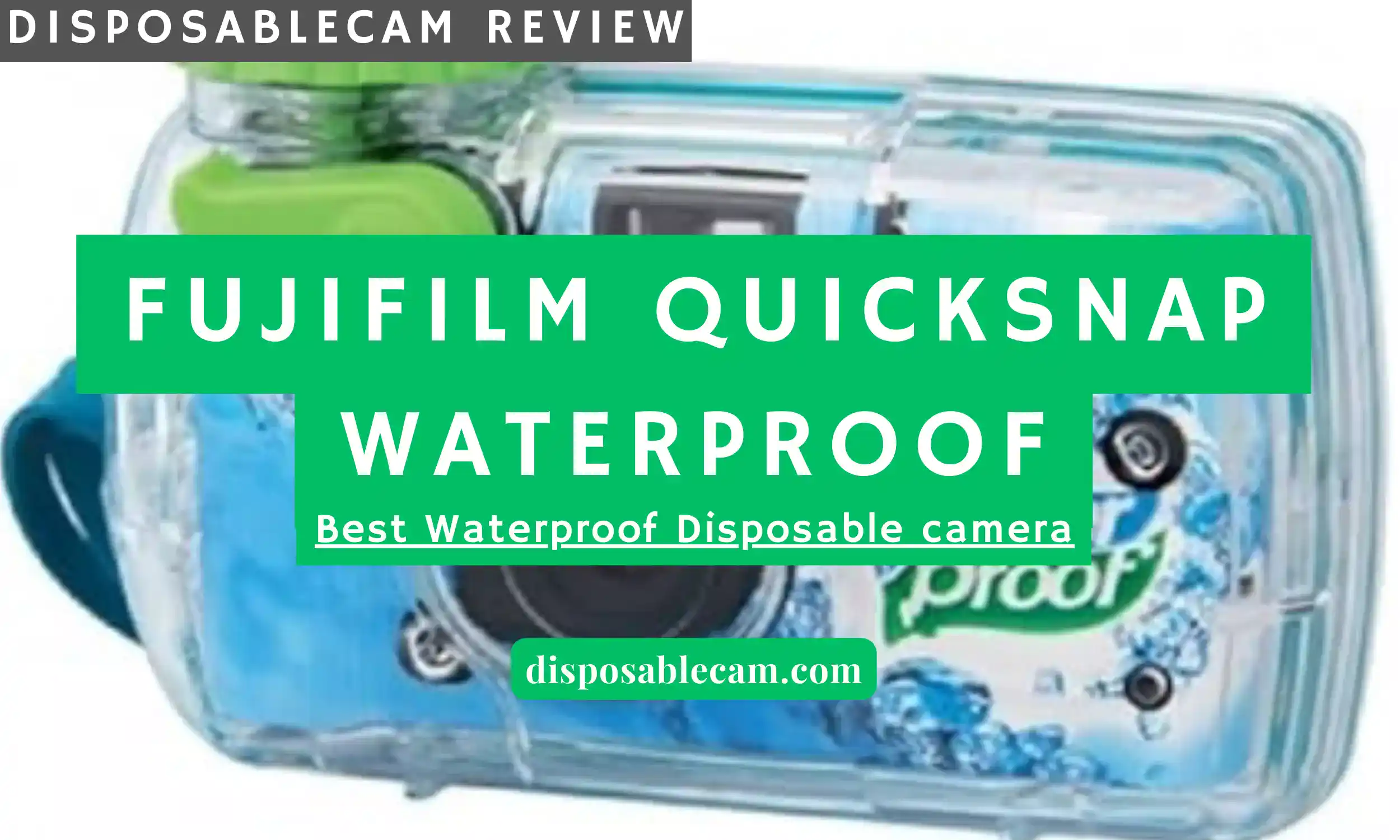In the age of digital marvels, there’s a unique fascination that surrounds disposable cameras – those unassuming companions that have silently witnessed countless moments at parties and gatherings. Beyond their lightweight frames lies a captivating charm, and in this article, we embark on a journey to unveil the inner workings of these one-time-use wonders. Join us as we not only explore the mechanics behind disposable cameras but also rediscover the art and magic they bring to capturing moments in a world saturated with pixels and screens.
Table of Contents
I. Introduction to Disposable Cameras
Disposable cameras, those familiar, lightweight gadgets often seen at parties and events – hold a unique charm in the era of digital photography. In this article, we’ll take a closer look at these one-time-use wonders. It’s not just about understanding how disposable cameras work but understanding the magic they bring to capturing moments.
Overview and Significance of Understanding How Disposable Cameras Work
Ever wondered what’s going on inside those simple cameras? Well, it’s more than just mechanics. Exploring how disposable cameras work adds a layer of appreciation for their simplicity and effectiveness. It’s not just about snapping pictures; it’s about the art of capturing moments with limited resources. So, let’s unravel the charm and practicality that comes with the world of disposable photography. Join us on this journey!
II. History and Evolution of Disposable Cameras
Disposable cameras have undergone a fascinating journey, marked by significant developments and a surge in popularity over the years. This section delves into the evolutionary timeline of these convenient photographic devices, exploring key milestones and the factors that contributed to their widespread adoption.
Development and Popularity Over the Years
The progression of disposable cameras is intricately tied to advancements in technology, changes in consumer preferences, and innovations in photography. Understanding the historical context provides valuable insights into how these simple yet effective devices have become a ubiquitous tool for capturing memories. Explore the pivotal moments that shaped the history and fueled the rising popularity of disposable cameras.
III. How to Use a Disposable Camera: A Step-by-Step Guide
Disposable cameras offer a straightforward approach to capturing memories. Understanding how to use them properly ensures optimal performance and stunning results. Follow this step-by-step guide to make the most of your disposable camera experience.
A. Loading Film for Optimal Performance
Loading film correctly is the first crucial step in using a disposable camera. Follow these steps to ensure optimal performance:
- Open the Camera Back: Locate the latch or button to open the back of the camera. This is where the film will be loaded.
- Insert the Film Cartridge: Take the film cartridge out of its packaging. Align the protruding end with the corresponding slot inside the camera and push it gently until it clicks into place.
- Advance the Film: Close the camera back securely. Turn the advance wheel or push the film advance lever to advance the film to the first frame. Stop when you feel resistance.
- Check Film Alignment: Ensure that the film is properly threaded and aligned with the camera’s sprockets. This step is crucial for preventing issues during exposure.
- Close the Camera: Double-check that the camera back is closed and latched securely to avoid light leaks. Your camera is now loaded and ready to capture moments.
B. Navigating Frame Advance, Shutter Release, and Flash Usage
Understanding the functions of frame advance, shutter release, and flash usage is key to achieving well-exposed and captivating photos:
- Shutter Release: Press the shutter release button fully to capture a shot.
- Frame Advance: After capturing each photo, advance the film to the next frame. Follow the manufacturer’s instructions for your specific camera model.
- Flash Usage: Determine when to use the flash based on lighting conditions. Many disposable cameras have automatic flash, but some allow manual control. Refer to your camera’s manual for guidance.
C. Efficient Film Rewinding Techniques
Efficiently rewinding the film is crucial for preserving your captured memories and preparing the camera for film development:
- Identify the Film Rewind Button or Knob: Locate the designated button or knob for rewinding the film. It is typically labeled on the camera body.
- Press or Turn the Rewind Mechanism: While holding the camera securely, press the rewind button or turn the rewind knob in the direction indicated. Feel for the decrease in tension as the film is rewound into the cartridge.
- Open the Camera Back: Once you sense that the film is fully rewound, open the camera back to remove the exposed film cartridge safely.
By mastering these steps, you’ll confidently navigate the intricacies of using a disposable camera, ensuring each shot is a memorable moment captured with precision.
IV. Tips for Optimal Disposable Camera Photography
A. Mastering Lighting Considerations
When using a disposable camera, understanding how to leverage available light is crucial for capturing stunning shots. Explore techniques to make the most of natural light, experiment with shadows, and consider the impact of different lighting conditions on your subjects.
B. Composition Tips for Striking Images
Compose your shots thoughtfully to create visually compelling images. Learn about the rule of thirds, framing, and perspective to enhance the overall aesthetic of your photographs. With a disposable camera’s limited control, mastering composition becomes even more essential for impactful results.
C. Making the Most of Limited Exposures
Given the finite number of exposures in a disposable camera, strategic shot selection is key. Prioritize moments that truly matter, and consider experimenting with different angles and perspectives within each exposure. Make each shot count to maximize the storytelling potential of your disposable camera photography.
V. Developing and Retrieving Photos: Traditional vs. Digital Options
Capturing memories with disposable cameras is an exciting journey, and understanding how to develop and retrieve photos adds another layer to the experience. Explore the two primary methods—traditional film development and modern digital solutions—to bring your disposable camera moments to life.
A. Traditional Film Development Process
Delve into the timeless art of traditional film development, where each frame holds the anticipation of a unique, tangible photograph. Follow these steps to unlock the magic of analog photography:
- Film Retrieval: Carefully rewind the exposed film, ensuring it’s securely back in its canister. This step is crucial for protecting your captured moments from light exposure.
- Processing at a Lab: Take your rewound film to a professional photo lab for development. Labs equipped with the necessary chemicals and expertise ensure optimal results.
- Prints and Negatives: After processing, you’ll receive physical prints of your developed photos along with the negatives. These negatives are essential for future reprints or enlargements.
- Album or Display: Arrange your developed photos in a classic photo album or frame them for a personalized display. Traditional film development provides tangible, timeless images that hold a unique charm.
Embracing the traditional film development process not only connects you with the roots of photography but also allows you to savor the anticipation of seeing each image come to life in physical form.
B. Digital Solutions for Disposable Camera Photos
In the modern era, embracing digital solutions for developing and sharing your disposable camera captures opens up a realm of convenience and creative possibilities. Explore the two primary methods – traditional film development and modern digital solutions – to bring your disposable camera moments to life.
1. Digital Scanning:
- Film to Digital Conversion: Use a film scanner to convert analog images into high-quality digital files.
- Preserving Image Quality: Digital scanning ensures that the unique aesthetic charm of disposable camera photos is retained in the digital format.
- Editing Flexibility: Digitized images allow for easy editing using various digital tools to enhance colors, contrast, and overall visual appeal.
2. Online Photo Services:
- Efficient and Convenient: Explore online platforms that offer digital development and delivery options for your disposable camera photos.
- Accessibility: Access your digital images from anywhere, anytime, making sharing and printing a seamless experience.
- Customization: Some online services provide additional features, such as creating digital albums or personalized photo products.
3. Editing and Sharing:
- Enhancing Visual Appeal: Utilize digital editing tools to fine-tune your photos, adjusting exposure, sharpness, and applying creative filters.
- Social Media Integration: Share your disposable camera captures on social media platforms, allowing you to connect with a wider audience and receive instant feedback.
- Cloud Storage: Store your digital images in the cloud for safekeeping, ensuring they are readily available for future use and enjoyment.
4. Creating Digital Albums:
- Organizing Memories: Compile your digital photos into virtual albums, creating a cohesive and visually appealing collection.
- Easy Sharing: Share entire digital albums with friends and family, allowing them to relive the moments captured with your disposable camera.
- Preserving Memories in the Digital Age: Digital albums provide a contemporary way to preserve and share memories, blending the nostalgia of disposable photography with modern technology.
Whether you opt for the timeless charm of traditional film development or the efficiency of digital solutions, both methods ensure your disposable camera memories are preserved in a way that suits your preferences and lifestyle. Embrace the flexibility of the digital age while cherishing the unique moments captured through the lens of your disposable camera.
VI. Limitations and Considerations in Disposable Camera Usage
While disposable cameras offer simplicity and convenience, users should be mindful of certain limitations and considerations to enhance their photographic experience.
A. Navigating through Limited Settings and Controls
One notable drawback of disposable cameras is the limited control over settings compared to advanced photographic equipment. Understanding and working within these limitations can be key to capturing memorable moments effectively.
Take it as a challenge and get creative!
B. Environmental Impact Awareness
Disposable cameras, given their single-use nature, raise environmental concerns. Awareness of the ecological footprint and proper disposal practices are crucial when buying a new disposable camera.
C. Exploring Alternatives and Technological Advancements
As technology evolves, alternatives to traditional disposable cameras emerge. Exploring these alternatives, such as reusable film cameras or digital cameras, allows photographers to adapt to changing trends and enhance their creative possibilities.
VII. Frequently Asked Questions (FAQs) and tips on Disposable Cameras
Disposable cameras are straightforward to use, but it’s common for users to have questions about their functionality and optimal usage. Here, we address some of the most frequently asked questions to enhance your understanding and make your disposable camera experience more enjoyable.
Addressing Common Queries
A: The number of exposures varies, typically ranging from 24 to 36 frames. Check the packaging or camera details for specific information.
A: While disposable cameras have limitations in low light, they often come equipped with a flash for better performance in such conditions.
A: The number of exposures varies, typically ranging from 24 to 36 frames. Check the packaging or camera details for specific information.
A: Not all disposable cameras are waterproof, so check the camera specifications. Some are designed for water use, while others are not.
B. Troubleshooting Tips for Seamless Usage
Encountering issues with your disposable camera? Here are some troubleshooting tips to help you overcome common challenges and ensure a smooth photography experience.
- Problem: Flash not working
- Solution: Check if the flash is enabled and if the batteries are still functional. Replace batteries if necessary.
- Problem: Blurry photos
- Solution: Ensure proper stabilization when taking pictures, and avoid excessive movement. If the issue persists, consider using the flash in low light conditions.
- Problem: Film not advancing
- Solution: Check for any obstructions in the film advance mechanism. If the problem persists, the camera may be at the end of its film roll.
- Problem: Overexposed photos
- Solution: Be mindful of lighting conditions and avoid using the flash in well-lit environments. Experiment with different angles to reduce overexposure.
By addressing these common queries and providing troubleshooting tips, you can make the most out of your disposable camera, capturing memorable moments with ease.
VIII. Conclusion: Key Takeaways and Encouragement to Explore Disposable Photography
A. Recap of Essential Points
As we draw the curtains on our exploration into the inner workings of disposable cameras, let’s encapsulate the vital insights discussed throughout this guide:
- Understanding the Components: We delved into the intricate components of disposable cameras, from the various film types and sensitivity settings to the external features influencing user experience and the crucial role of the shutter mechanism in capturing moments.
- How to Use a Disposable Camera: Our step-by-step guide equipped you with the knowledge to load film effectively, navigate frame advance, shutter release, and flash usage, and efficiently rewind film, ensuring optimal performance during your photography journey.
- Advantages of Disposable Cameras: We unpacked the unparalleled convenience, affordability, and nostalgic appeal that make disposable cameras a unique and accessible tool for capturing moments, whether on a budget or seeking the charm of vintage aesthetics.
- Limitations and Considerations: While celebrating their simplicity, we navigated through the limitations of disposable cameras, emphasizing the need for environmental awareness and exploring alternatives in the ever-evolving landscape of photographic technology.
- Photography Tips for Optimal Results: We provided insights into mastering lighting considerations, composition techniques, and making the most of limited exposures, empowering you to capture compelling and impactful images with your disposable camera.
B. Encouraging Readers to Embrace the Disposable Camera Experience
As we conclude, we extend an invitation to embrace the simplicity and charm of disposable photography. It’s not merely about capturing moments; it’s about immersing yourself in a unique and nostalgic visual journey. Step away from the complexities of modern technology, savor the tangible process of capturing images, and relish in the unpredictability that disposable cameras offer.
Take the plunge, embark on your own disposable camera adventure, and let each snapshot tell a story that transcends pixels and screens. The disposable camera experience is not just about pictures; it’s about creating tangible memories that stand the test of time. Happy capturing!
IX. Additional Resources: Explore Recommended Brands and Photography Basics
In the realm of disposable photography, discovering reliable brands and honing fundamental photography skills can significantly enhance your experience. Delve into the following resources to access top disposable camera brands and essential knowledge for photography beginners.
A. Links to Top Disposable Camera Brands
When it comes to disposable cameras, certain brands have established themselves as leaders in the industry. Explore the following links to discover the best options for capturing your moments with simplicity and style:
- Kodak: [Link]
- Immerse yourself in the rich history and cutting-edge technology that make Kodak disposable cameras a timeless choice for capturing memories.
- Fujifilm: [Link]
- Explore the innovative features and high-quality imaging solutions that Fujifilm brings to the world of disposable photography.
- Ilford: [Link]
- Uncover the unique characteristics and artistic possibilities offered by Ilford disposable cameras, known for their emphasis on black and white photography.
By exploring these links, you’ll gain valuable insights into the top disposable camera brands—Kodak, Fujifilm, and Ilford—helping you make informed choices for your photographic endeavors.
B. Further Reading on Photography Basics for Beginners
For those new to the art of photography, understanding the basics is crucial for capturing memorable and visually appealing images. Dive into the following resources tailored for beginners:
- Understanding Exposure: A Beginner’s Guide
- Overview: Master the fundamentals of exposure, including aperture, shutter speed, and ISO, to enhance your photography skills.
- Composition Techniques for Stunning Shots
- Overview: Explore composition principles to add depth and visual interest to your photographs.
- Essential Camera Settings Every Beginner Should Know
- Overview: Learn about key camera settings and how to optimize them for various shooting scenarios.
These resources, combined with insights from renowned brands like Kodak and Fujifilm, provide a solid foundation for beginners, ensuring you’re equipped with the knowledge needed to elevate your photography game.
Connect with Us on Social Media!
Join our social media channels to engage with a broader community of photography enthusiasts. Share your photos, ask questions, and connect with like-minded individuals passionate about capturing moments through the lens of disposable cameras. Together, let’s build a vibrant and supportive network dedicated to the art and science of photography.
Thank you for embarking on this journey. May your creative endeavors be filled with joy and inspiration. Happy shooting!
Related posts:
Weddings can be expensive, but disposable cameras are a budget-friendly way to add fun. We’ll talk about why they’re not…
Delve into the intricacies of disposable camera expiration as we discuss the impact of environmental factors and identify signs of…
Can you bring a disposable camera on a plane? Will your disposable camera get ruined in airport security? Unravel the…
Dive into the world of monochrome photography with the Ilford HP5 Plus, hailed as the best black and white disposable…
Fujifilm QuickSnap Waterproof: Top Single-Use Underwater Camera
Are you ready to explore the depths and capture your underwater adventures in stunning detail? The Fujifilm QuickSnap Waterproof disposable…
Explore the best affordable disposable camera, the Fujifilm QuickSnap 400, celebrated for its quality and affordability, making it a versatile…







